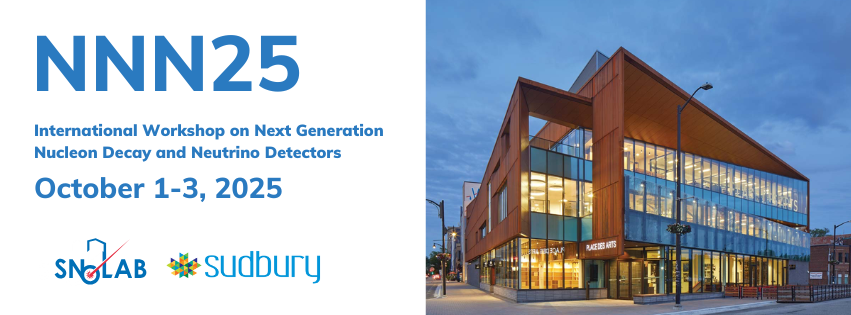Access to clean drinking water is an urgent global challenge, driven by climate change and emerging contaminants beyond the reach of conventional treatment methods. At TRIUMF, we have developed the Water Monitoring System (WMS), a novel in-situ monitoring approach that adapts technologies from large water Cherenkov detectors. The system employs single-photon-sensitive detectors, photon...
The QuIPS collaboration is designing novel tabletop optomechanical sensors to search for evidence of sterile neutrinos in the keV to MeV mass range. This search will employ a levitated radioactive nanosphere, where nuclear recoils following decays within the nanosphere will transfer their momentum to the entire nanosphere. By measuring the nanosphere’s recoil momentum for each decay, the...
Future large-scale detectors searching for rare events such as neutrinoless double beta decay and dark matter nuclear recoils require understanding and an accurate measurement of the background sources present in such detectors. Radon contamination presents a challenge and significant contribution to the background of these experiments. This talk will present the radon assay program developed...
The Deep Underground Neutrino Experiment (DUNE) is a future long baseline neutrino oscillation experiment that will use a powerful neutrino beam produced at Fermilab and two detectors: a near detector at Fermilab and a far detector, 1300 kilometers away, at the Sanford Underground Research Facility in South Dakota.
The DUNE experiment will feature a high-throughput, modular Data Acquisition...
The DUNE experiment is a future long baseline experiment planned with a 1300km baseline and a flux spectrum peaked at approximately 3.5GeV. This means the DUNE experiment has a unique opportunity to detect tau neutrino charged current interactions. Our goal is to identify the tau neutrino charged current events in DUNE's liquid argon time projection chamber (LArTPC) far detectors. To identify...
The PIKACHU experiment is a search for the double beta decay of 160Gd using large single crystals of Ce:Gd3Al2Ga3O12 (GAGG). In particular, it aims to observe the so-far undetected two-neutrino double beta decay (2nbb) of 160Gd down to half-lives predicted by theory. We have been developing high-purity GAGG crystals, and in 2023, succeeded in producing crystals with uranium- and thorium-series...
The LEGEND collaboration aims to unambiguously discover neutrinoless double-beta decay (0νββ) using high-purity germanium (HPGe) detectors enriched in the double-beta-decaying isotope $^{76}$Ge (Q$_{ββ}$ = 2039 keV). The HPGe detectors operate in liquid argon, which serves as a coolant and an active shield, enabling a quasi background-free search for 0νββ decay. The first phase, LEGEND-200,...
The Water Cherenkov Test Experiment (WCTE) is a 40-ton water Cherenkov detector operated in the T9 beamline of the East Area at CERN from October 2024 to June 2025. It is instrumented with 97 multi-PMT modules, each consisting of 19 3" PMTs. Charged particles in the beam are characterized by a series of trigger scintillators and aerogel Cherenkov threshold detectors on an event-by-event basis...
Radon-222 is a limiting background in many leading dark matter and low-energy neutrino experiments. At SNOLAB, we have various radon instruments dedicated to material screening and to the measurement of radon concentration in N₂ gas systems and in ultra-pure water. My talk will focus on describing these instruments. In addition, it will describe a recent development aimed at improving our N₂...

